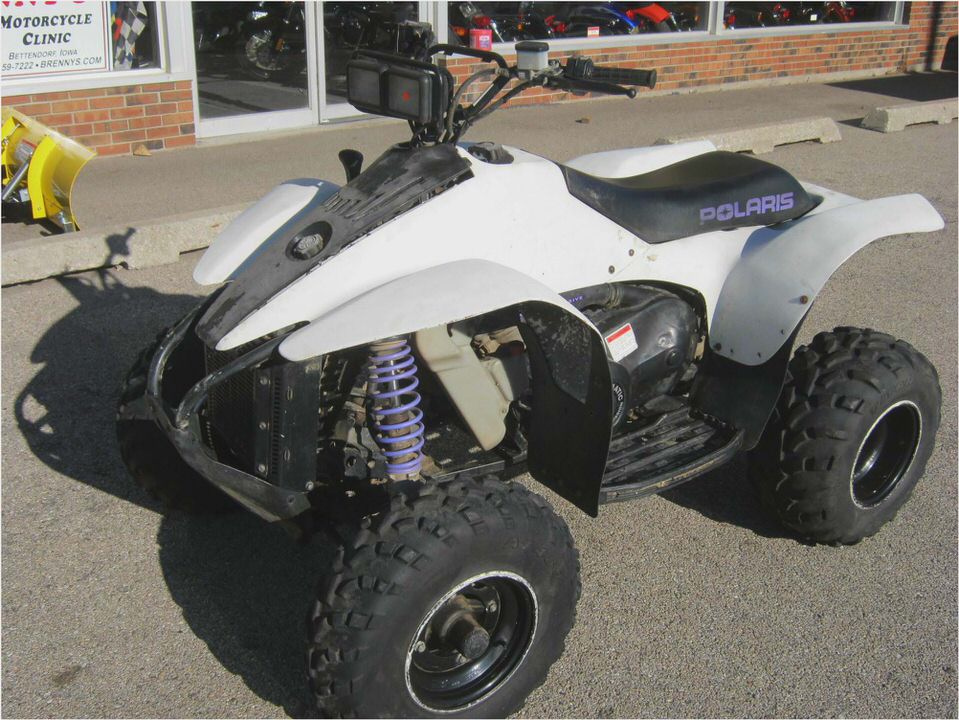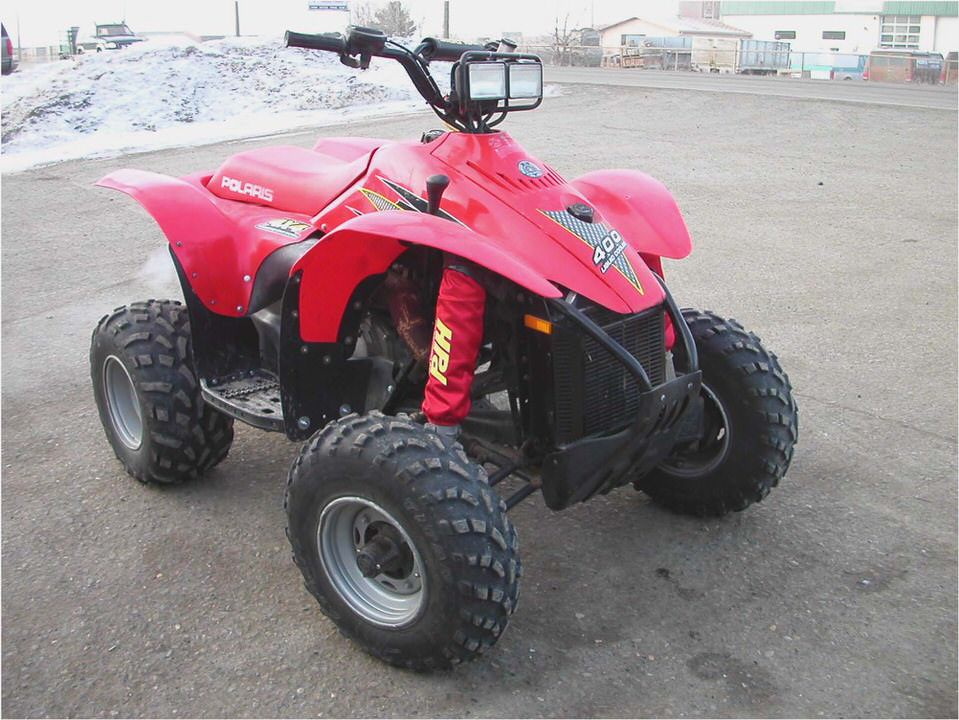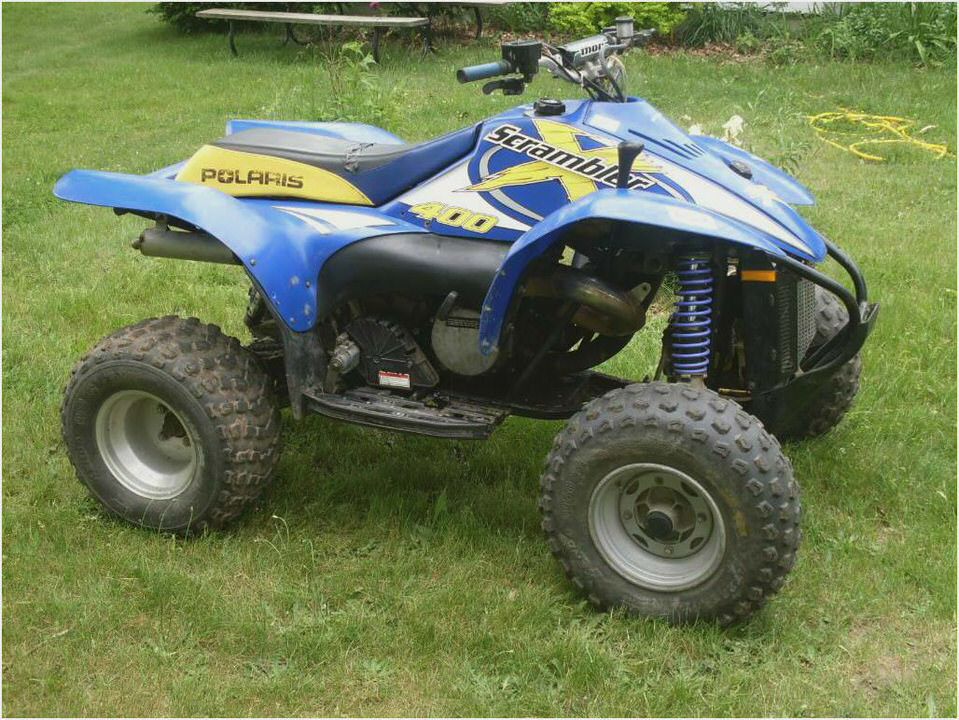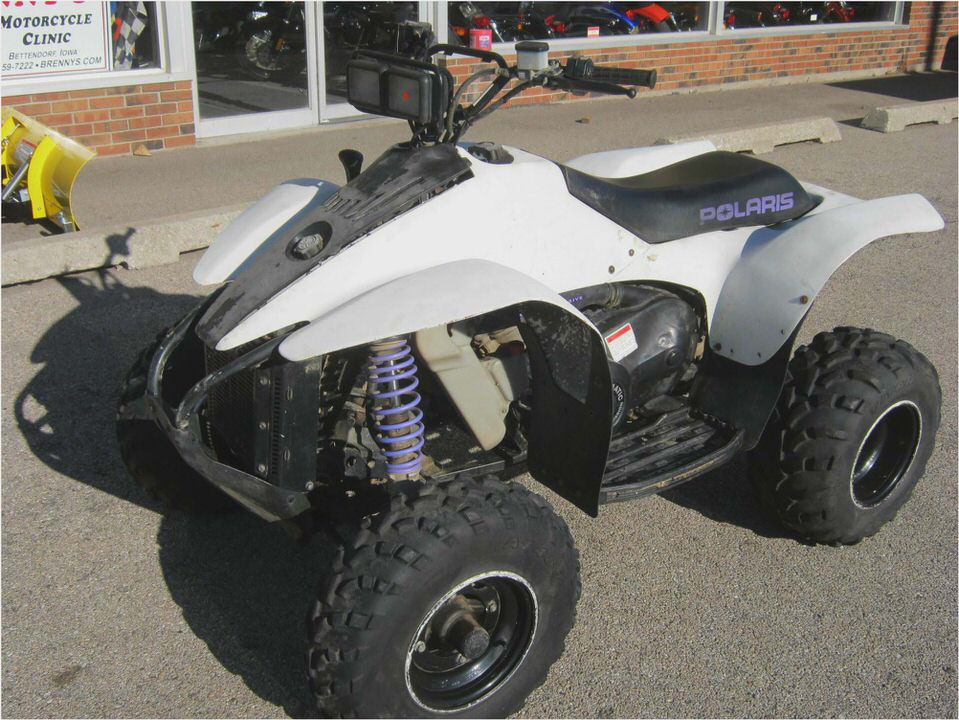
The Scrambler 500 is powered by Polaris’ 500 HO (high output) engine. The 498cc 4-stroke motor features a four valve single overhead cam design with a bore and stroke of 92x75mm. It is brought to life by electric starting with an automotive turn key style switch or a recoil mechanical backup. With its long heritage there is no fuel injection on this bad boy.
Instead the air fuel mixture is handled by a 40mm Mikuni CV carburetor.
Polaris set the standard for transmission configuration in this class and its competitors have followed suit. The Scrambler’s fully automatic CVT transmission has a single forward range plus neutral and reverse. Switching between them is convenient thanks to the shifter located inboard on the right front fender.
Final drive to the rear wheels is handled by a chain and sprocket setup with shaft drive transferring power to the fronts.
The Polaris All-Wheel Drive system gives you the option of operating in either two or all wheel drive. While operating in AWD the front wheels don’t engage until the rear end breaks traction. This allows for lighter steering effort with the front wheels engaging only when extra traction is needed.
A switch located just above the thumb throttle selects between two and all-wheel drive.
The Scrambler features a tubular steel chassis with McPherson strut front suspension and a solid axle swingarm monoshock design in the rear. Its suspension travel numbers are long even by today’s standards. The front end had 8.2 inches of wheel movement with 10.5 in the rear.
Front and rear brakes are applied via a single hand operated lever on the left side of the handlebars. Additionally, the foot brake on the right floorboard operates the rear brake independently.


The Scrambler 500 also features full floor boards with raised foot pegs. Its handlebar mounted dual headlights can be independently aimed up or down, turn with the handlebars to always illuminate the direction in which you’re headed and feature high and low beam settings. The 23×7-10 front and 22×11-10 rear tires offer decent size lugs with a reasonably low profile shape to balance traction and handling manners.
Unfortunately, the Scrambler still uses heavy stamped steel wheels while its competitors have all switched to lighter aluminum rims.
The underside of the chassis looks gnarly and a plastic skid plate is used to cover any areas of the lower engine cases not covered by the frame. Heavy metal discs are mounted next to the rear sprocket and brake disc instead of using a standard rear swingarm skid plate. The metal discs have a slightly larger diameter then the brake rotor or sprocket, allowing the machine to drag over rocks or stumps without any of the more vulnerable rear hardware being damaged.
When it comes to instrumentation the Scrambler shows its age. While its newer competitors sport modern looking digital dash panels, the Scrambler still uses its extremely basic reverse, neutral and hi temp indicator lights. The mechanical fuel gauge is located in the gas cap and is controlled by a rod mounted float that hangs down on the underside of the cap.
We tested our Scrambler on 100 acres of private property in southern Ohio. Our test area consisted of twisty trails, wide open field sections and a steep climb up a slippery, slimy creek bank.



- 2011 Polaris Sportsman 500 H.O. Review
- Specifications for a Polaris Xplorer eHow
- Polaris Scrambler 500 4X4 ATV Repair Manual 1997-2000 Clymer
- Polaris 50 Scrambler for Sale Owners Guide Books
- D&D Performance Scrambler 90 Pipe
